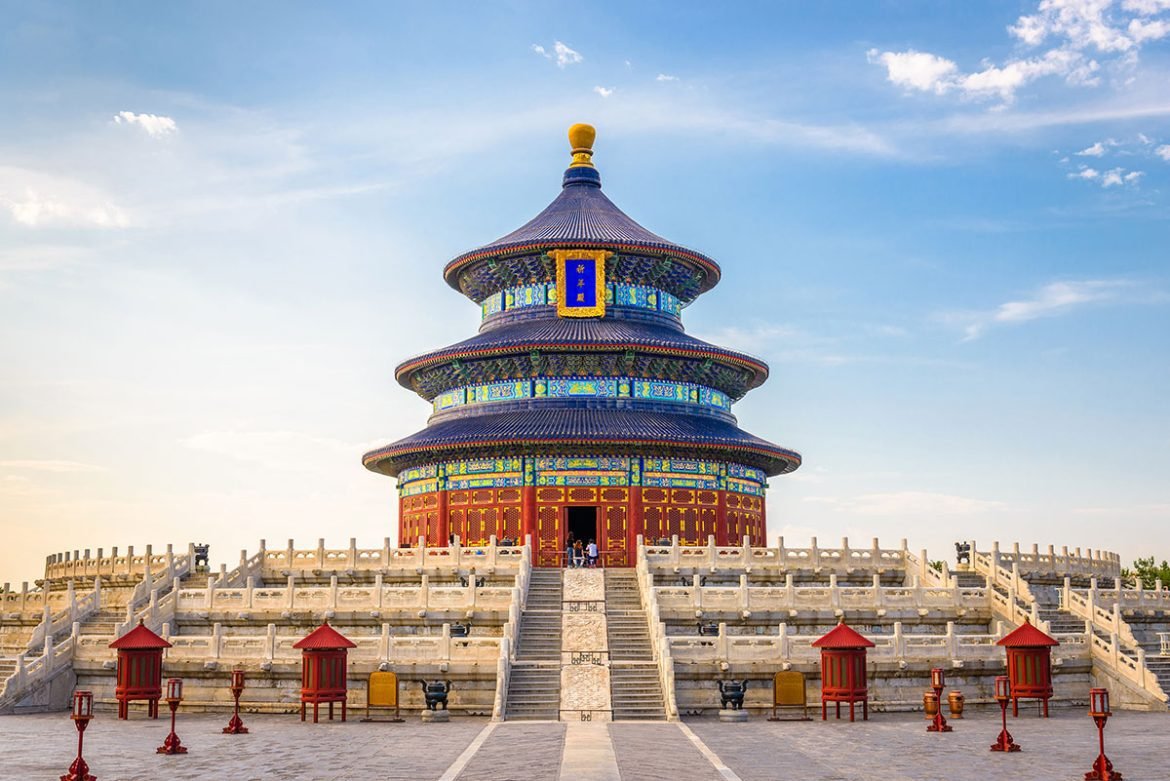China is a nation steeped in history and culture, known for its ancient traditions, bustling cities, and breathtaking landscapes. The birthplace of Peking Man, gunpowder, and noodles, China has a rich legacy that has withstood the test of time. The country’s vast population and abundant natural resources have fueled its recent economic growth, and its dynamic culture continues to fascinate visitors from around the world.
For first-time visitors to China, there are some must-see destinations. The Great Wall and the Forbidden City in Beijing, the towering skyscrapers of Shanghai, and the Terra Cotta Warriors in the ancient capital of Xi’an are all awe-inspiring sights. Meanwhile, the Three Gorges Dam on the Yangtze River is the world’s largest hydroelectric dam and a popular stop for cruise passengers.
10. Lingyin Temple
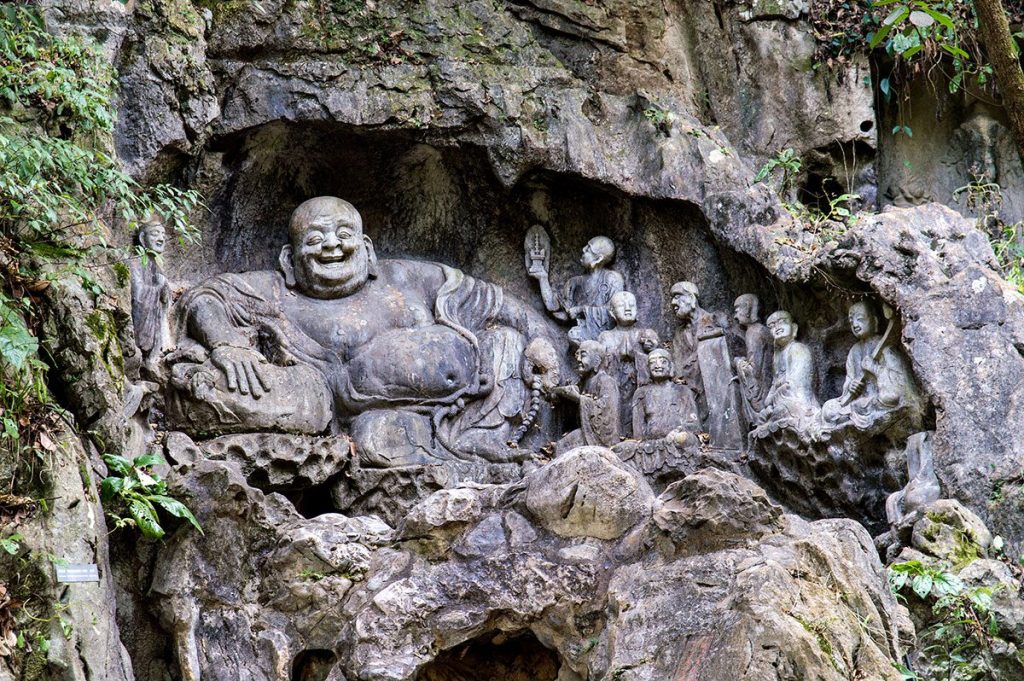
Explore the intricately carved Buddhist stone sculptures at Feilai Feng grottoes. Image source: Atosan/Shutterstock.com
For more seasoned travelers, there is plenty to discover beyond China’s major cities. The rugged terrain of Sichuan and Gansu provinces offers opportunities to explore Tibetan settlements and rice terraces, while minority communities offer a glimpse into a way of life that has remained largely unchanged for generations.
One of the most captivating aspects of Chinese culture is its ancient Buddhist temples. These temples offer a glimpse into a timeless realm, where the practice of Buddhism has remained unchanged for centuries. Visiting a Chinese Zen garden is a truly immersive experience, where visitors can lose themselves in centuries of culture.
China’s complex history and diverse cultural traditions make it a fascinating destination for travelers of all interests. Whether you’re exploring the iconic landmarks or venturing off the beaten path, there is always something new to discover in this vibrant nation.
To enter Lingyin Temple, you must first go through the ceremonial Hall of the Heavenly Kings. The Wuling Mountains have been the spiritual center of Chinese Buddhism for hundreds of years. Like the temple itself, the beautiful surrounding mountains are a major draw for visitors. The Lingyin-Feilai Feng Scenic Area in the mountains is home to several man-made attractions, including bridges, monuments, sculptures, grottoes, artwork, and pavilions, all of which require a fee to enter. This is one of China’s biggest and most prosperous temples. The monastery’s site is dotted with lavish and elaborate grottoes that attest to this fact. The vast complex includes the Hall of the Five Hundred Arhats, the Sutra Library, the Huayan Hall, and the Grand Hall of the Great Sage.
9. Nanshan Temple
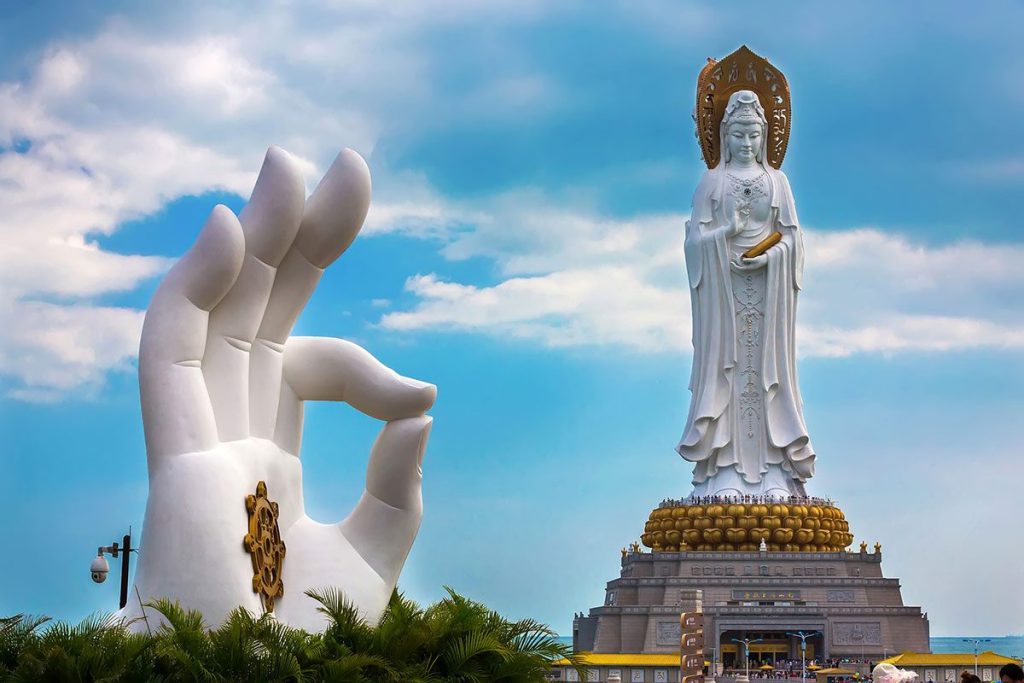
Discover tranquility in the presence of the magnificent White GuanYin statue. Image source: Valery Bocman/Shutterstock.com
The construction of Nanshan Temple since the establishment of the People’s Republic of China has resulted in the greatest Buddhist sacred site in China. A massive white monument of 100 meters (350 feet) in height was erected on a rocky outcrop in Sanya’s South Sea. All of the construction on the temple grounds revolves around this figure. A broad promenade extends from the main entry plaza, which is framed by white spires, to the monument on the water. The stunning three-sided monument is set in the middle of a pathway flanked by a gorgeous pond on one side and a clump of trees on the other. The Buddhist proverb, “Good fortune as great as the East Sea; longevity as lofty as Nanshan,” inspired the name of this Buddhist temple in South China.
8. White Horse Temple
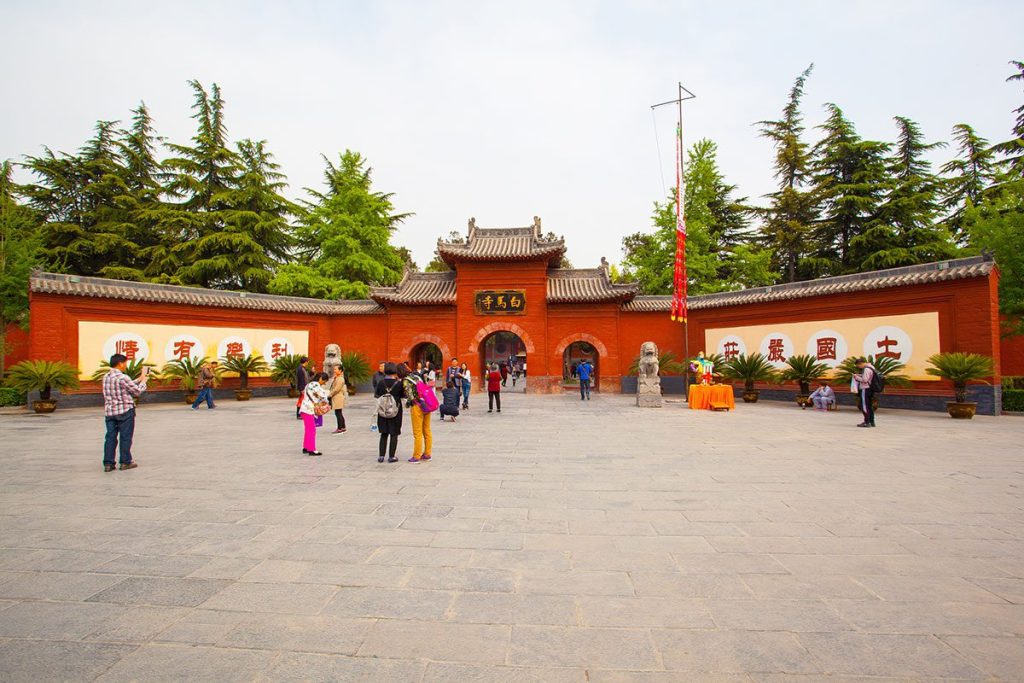
Step into history at the ancient White Horse Temple. Image source: Meiqianbao/Shutterstock.com
It is often believed that the White Horse Temple was the earliest Buddhist temple ever constructed in China. The 68 AD temple was constructed on the outskirts of the former Eastern Han capital. All signage is in both Mandarin and English, making it convenient for Western visitors. Throughout history, the main temple has undergone several renovations, most notably during the Ming and Qing dynasties, the 1950s, and most recently in 1973, during the Cultural Revolution. This stunning temple has several rooms that look out onto gardens and galleries. Marvel at the Jade Buddha, the renowned Amida and Maitreya Buddhas, and the two mythological lions guarding the entry.
7. Big Wild Goose Pagoda
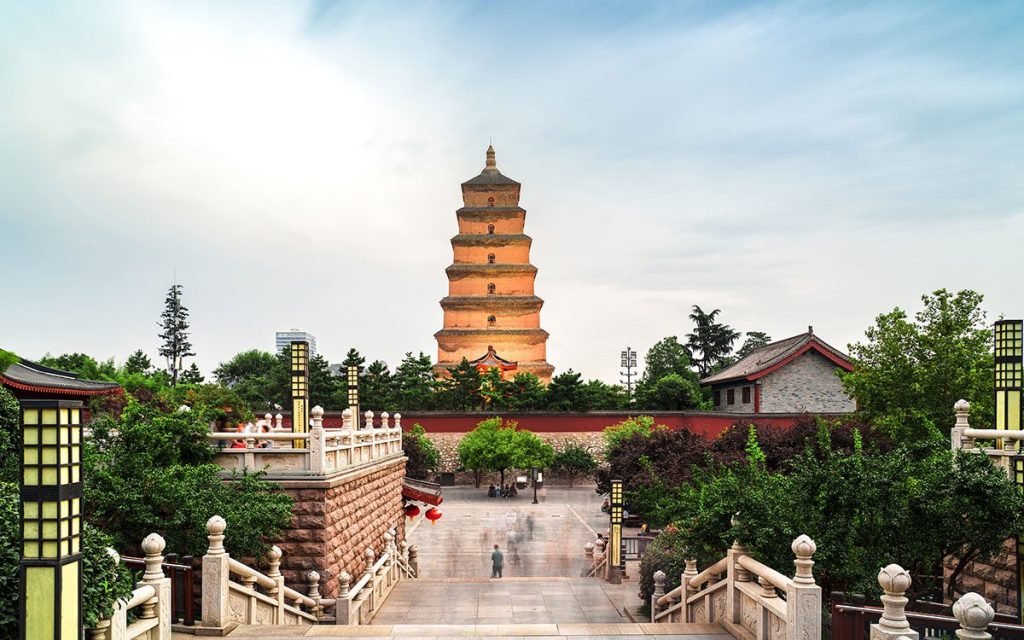
Witness the splendor of the Giant Wild Goose Pagoda in the morning light. Image source: Wang An Qi/Shutterstock.com
The Big Wild Goose Pagoda is a seven-story structure in southern Xi’an, Shaanxi Province, that was constructed in 652 during the Tang Dynasty. It was initially five stories tall, but has been shortened and reconstructed several times throughout the ages. Xuanzang, a renowned Buddhist explorer, constructed the structure to hold the sutras, sculptures, and figures of Buddha that he brought back from India. While the temple’s inside may seem underwhelming currently, the sight of this ancient structure towering above its contemporary surrounds is well worth the visit. To the south, you’ll find a pleasant open-air shopping complex.
6. Longmen Cave Temples
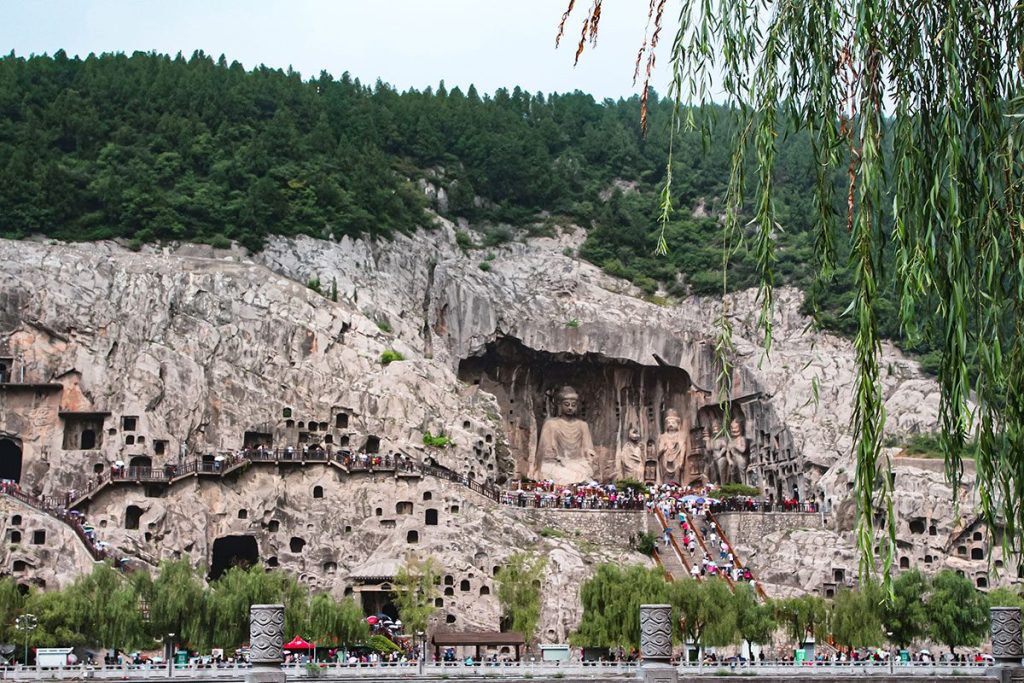
Explore the magnificent Longmen Buddhist cave temple complex. Image source: Anna Potiavina/Shutterstock.com
In Henan province, over a mile of limestone cliffs are home to an incredible 2,300 caves. Throughout the caverns, you may find some of the most impressive works of Northern Wei and Tang dynasty Chinese art ever discovered (316–907). A set of metal and limestone steps must be climbed in order to access the caverns located higher up the cliff side and see all 110,000 sculptures, 60 stupas, and 2,800 inscriptions. The sculptures and Buddhas are hewn directly from the hillside’s underlying limestone. You may enter each cave as if it were an elaborate relief. This carved cliff is remarkably well-preserved and is located on the banks of the Yi River.
5. Lama Temple
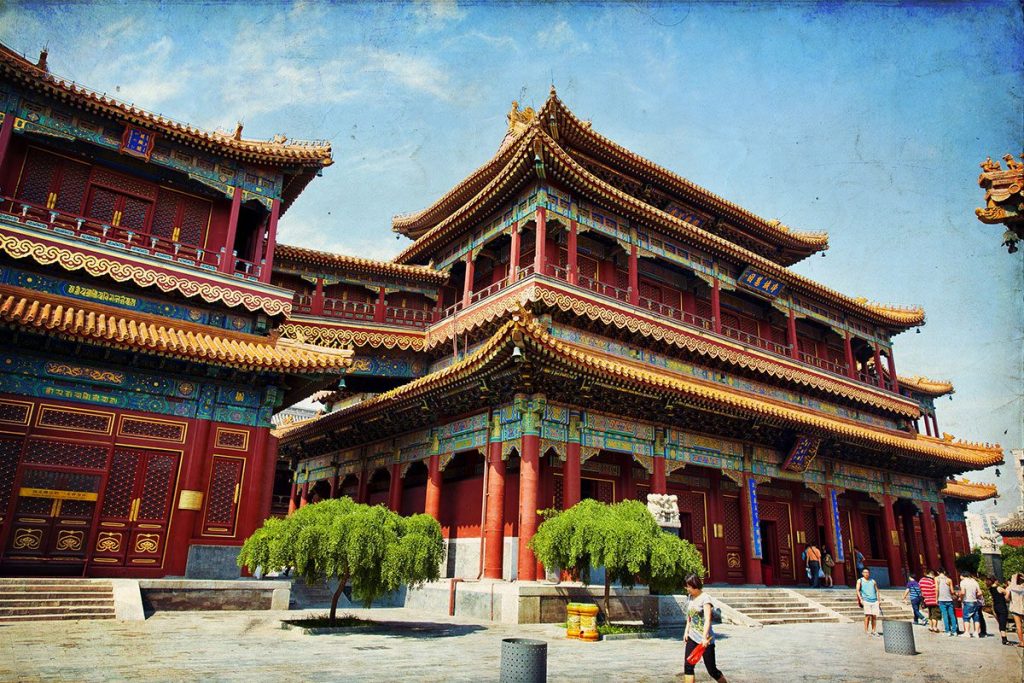
Immerse yourself in the tranquil ambiance of Lama Temple in Beijing. Image source: lapas77/Shutterstock.com
The magnificent Lama Temple in Beijing is at the center of the city’s Buddhist skyline. In 1744, the Lama Temple, once the home of Emperor Yong Zheng, was transformed into a lamasery. Visit the Lama Temple if you only have time for one temple in China. For good reason, it is often considered to be the most well-known Tibetan Buddhist temple outside of Tibet. In the middle of one of China’s largest towns is the Lama Temple, which is adorned with beautiful paintings, a Tibetan Buddha that measures 18 meters (60 feet) in height, tantric sculptures, stunning arches, handcrafted woodwork, and dazzlingly intricate roofs. You might easily spend a few days exploring the five enormous halls that make up this impressive complex.
4. Shaolin Temple
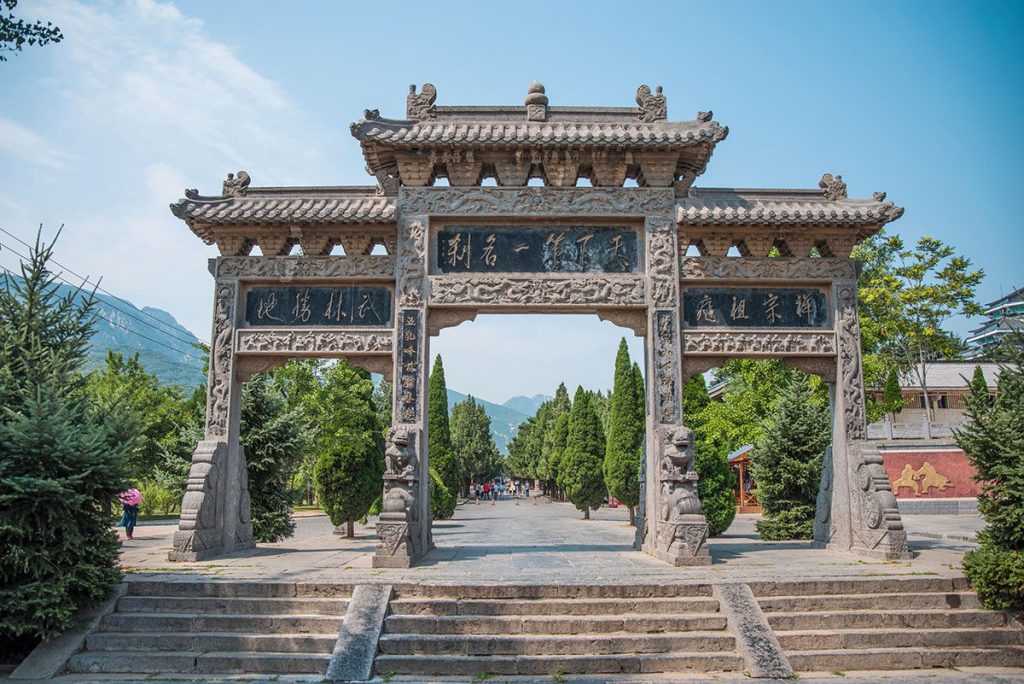
Experience the legendary Shaolin Temple, the cradle of martial arts. Image source: Skreidzeleu/Shutterstock.com
Shaolin Temple is the principal place of devotion for the 1,500-year-old Shaolin School of Buddhism. The temple and the school have been attacked several times throughout the ages, most recently in 1928 when the school was burned down. All of the remaining rooms have been updated for visitors. The halls of this commercialized shrine are often flooded with selfie-seeking tourists. Visitors interested in martial arts should include Shaolin on their list of must-see locations. The Wu Shu dojo is an architectural marvel. There will be a bunch of kung fu newcomers in the yard, breaking boards and doing flips for the onlookers.
3. Jokhang
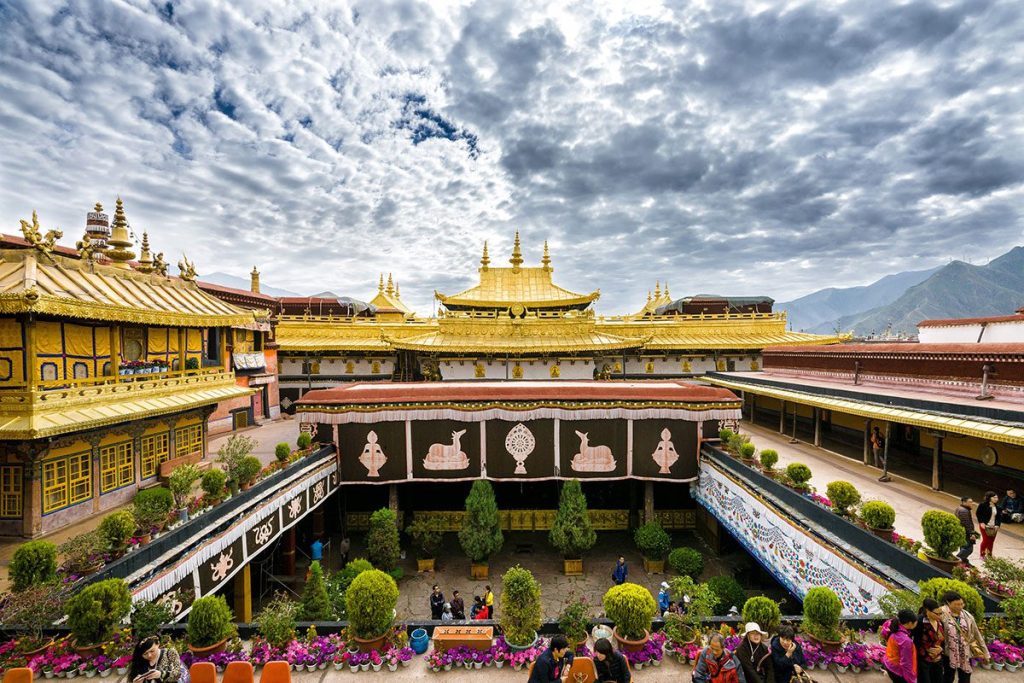
Marvel at the sacred Jokhang Temple, a spiritual pilgrimage site. Image source: Vladimir Zhoga/Shutterstock.com
When you visit the historic Jokhang Temple in the heart of Tibet, you’ll see Buddhist pilgrims prostrating themselves. They come from all over the globe to bow down before the holiest of Buddha statues, a central golden figure said to be 1,300 years old. Although it is run by the Gelug School, members of all branches of Buddhism are welcome to worship at this temple. The two-story temple has a stunning gold dome and an ornate maroon and gold interior. During the early hours, when the temple is open, you may see many devotees milling about and enjoying yak butter. A portion of the temple is restricted to grate-only access during the afternoons.
2. Hanging Monastery
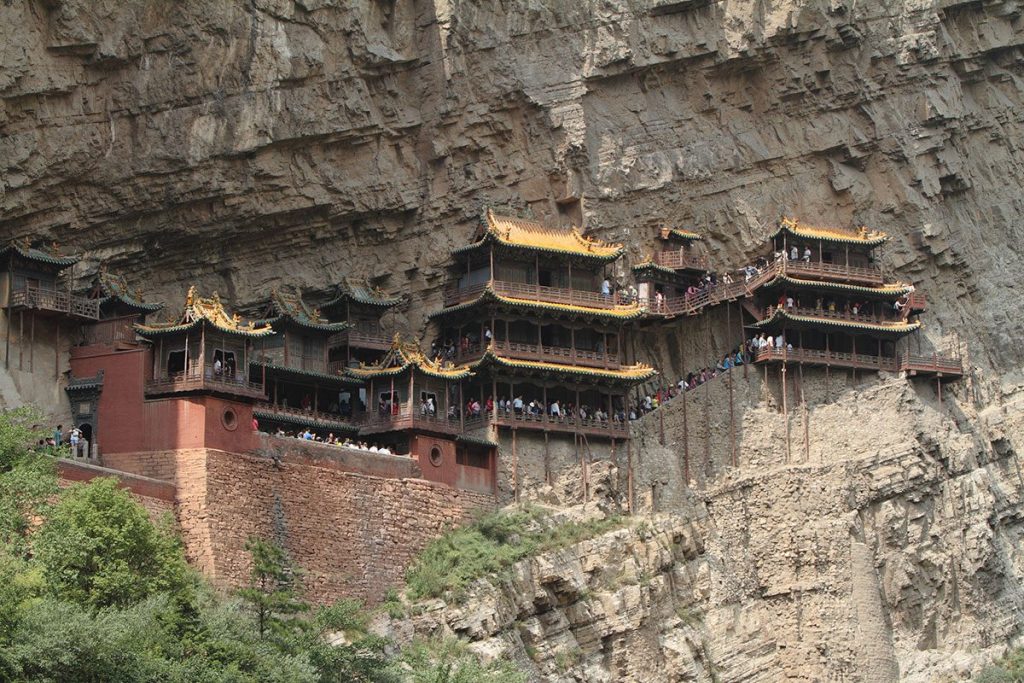
Admire the architectural wonder of Hanging Monastery in Datong. Image source: hecke61/Shutterstock.com
The Hanging Monastery lives up to its name by being built directly into a cliff 75 meters (246 feet) above ground. Long stilts drilled directly into the cliffside support elaborate Buddhist temples. These places of worship are connected by tiny hallways and rickety footbridges, but you won’t have much time to explore them. The effectiveness of the building’s foundations has decreased due to the large number of visitors. The Hanging Monastery will soon stop allowing tourists out of safety concerns. In 491 AD, construction began on the city of Hengshan. It is a great feat of architecture that it has survived this long. Also, don’t feel bad if you were rejected. The actual structure of the temple is rather ordinary. This temple will remain in your memory for its breathtakingly perilous cliffside architecture.
1. Temple of Heaven
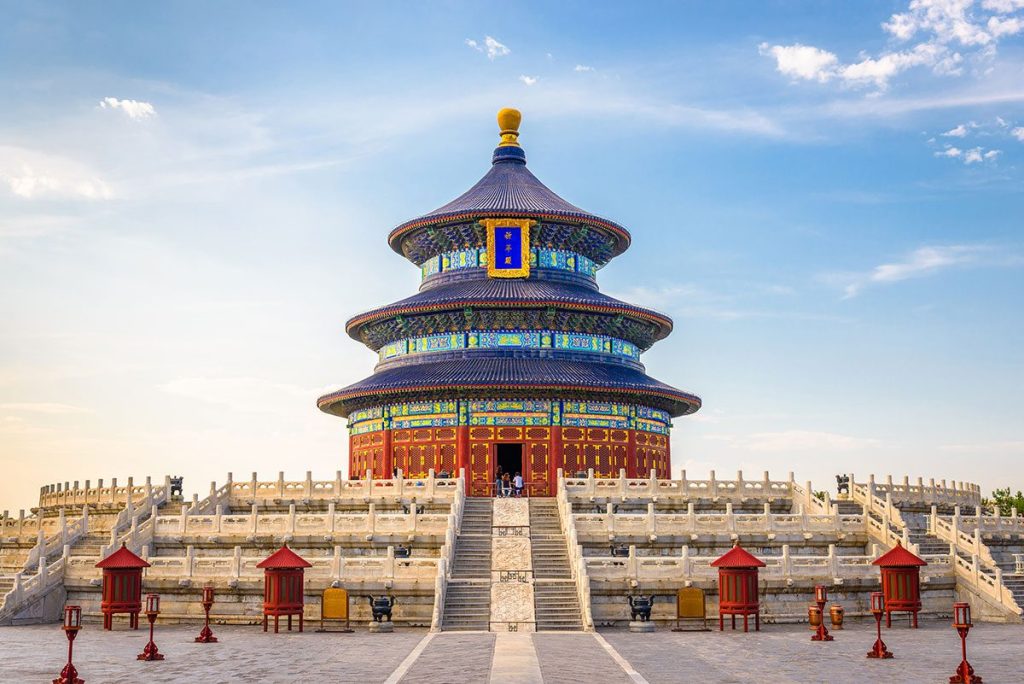
Behold the grandeur of the historic Temple of Heaven in Beijing. Image source: Sean Pavone/Shutterstock.com
Even though it’s often referred to as a temple, China’s most well-known religious structure, the Temple of Heaven, is really an altar. The absence of monks, worshipers, and incense from this location is deliberate. The central district of Beijing, however, is home to some really breathtaking buildings. This garden has a wall around it, with entrances in each cardinal direction. The indoor garden is carefully maintained in gridlike portions to smooth over nature’s bumps. Overlooking the temple gardens, the temple halls tower majestically. They were designed this way to represent the old idea that heaven is round and the earth is square.
The Hall of Prayer for Good Harvests, a gorgeous building with a purple-blue umbrella canopy set on a three-story marble terrace, is the park’s crowning architectural achievement. Travelers also like to visit echo walls, which are structures that amplify sound and allow visitors to whisper across the length of the structure. A whole Confucian temple was constructed for an emperor called the “Son of Heaven,” who prayed at the altar for the prosperity of his people.


